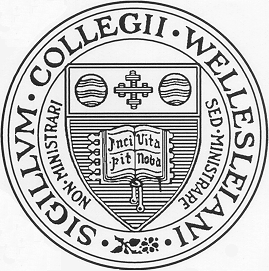
A
Brief History of Wellesley College
Wellesley College was founded in 1870 by Henry Fowle Durant and Pauline Fowle Durant. An impassioned believer in educational opportunity for women, Mr. Durant wanted to prepare women for “…great conflicts, for vast reforms in social life.” When he founded the College, Mr. Durant proclaimed, “women can do the work. I give them the chance.” He was referring not only to the 314 students comprising the first class, but also to its initial staff of seven appointed professors and 14 teachers, all, but one, women. Above all, he referred to Ada Howard whom he appointed president of his daring venture — a college designed to offer supposedly delicate 19th-century ladies education as rigorous and demanding as that available to the most able male scholars of their day.
Alice Freeman Palmer succeeded President Howard six years after the College opened, furthering the high academic standards for which it has since been known. A succession of remarkable women followed her, including Ellen Fitz Pendleton, who, during her 25 years in office, directed the rebuilding of the campus after the catastrophic College Hall fire of 1914; Mildred McAfee Horton, director of WAVES during World War II; Margaret Clapp, historian and Pulitzer Prize-winning biographer; Ruth M. Adams, president during the period that introduced exchange programs and continuing education; Barbara W. Newell, during whose tenure the College celebrated its Centennial; and Nannerl Overholser Keohane, under whose leadership the College’s financial underpinnings were greatly strengthened.
On Aug. 1, 2007, Kim Bottomly, a renowned immunobiologist and a deputy provost at Yale University, was named
Wellesley College’s 13th president. A Montana native, Bottomly graduated from the University of Washington with a
degree in zoology and earned her doctorate in biological structure from the
University of Washington School of Medicine. Before joining the Yale faculty in
1980, she did postdoctoral work in immunology at the National Institutes of
Health. For more on President Bottomly, please go to the President's Page.
On June 30, 2007, Diana Chapman Walsh stepped down from the presidency after 14 years. During those years, Wellesley undertook many new initiatives,
including a revision of the curriculum and an expansion of programs in
global education, experiential and service learning and technology-assisted
teaching and learning. Other important innovations included the opening
of the Davis Museum and Cultural Center, the establishment of the Religious
and Spiritual Life Program, the creation of the annual Ruhlman and Tanner
Conferences on student research and off-campus learning and other initiatives
designed to strengthen the quality of campus intellectual life. In addition, the management of the endowment was
strengthened, as were many of the college’s administrative structures.
In 2005 Wellesley completed a record-setting fundraising campaign, raising
more than $472 million for increased financial aid, construction of a
new campus center, restoration of the campus landscape and enhanced
academic programs.
Reaching back through more than 125 years, the College has sustained
its essential character and mission while adapting to a changing world.
Wellesley attracts a talented and diverse student body: 2,300 women from
more than 60 countries, 53 U.S. states and territories, and virtually
every ethnic, racial, religious and cultural background. Wellesley has
a distinguished faculty, teacher-scholars who are committed to providing
the finest educational experience for undergraduates.
